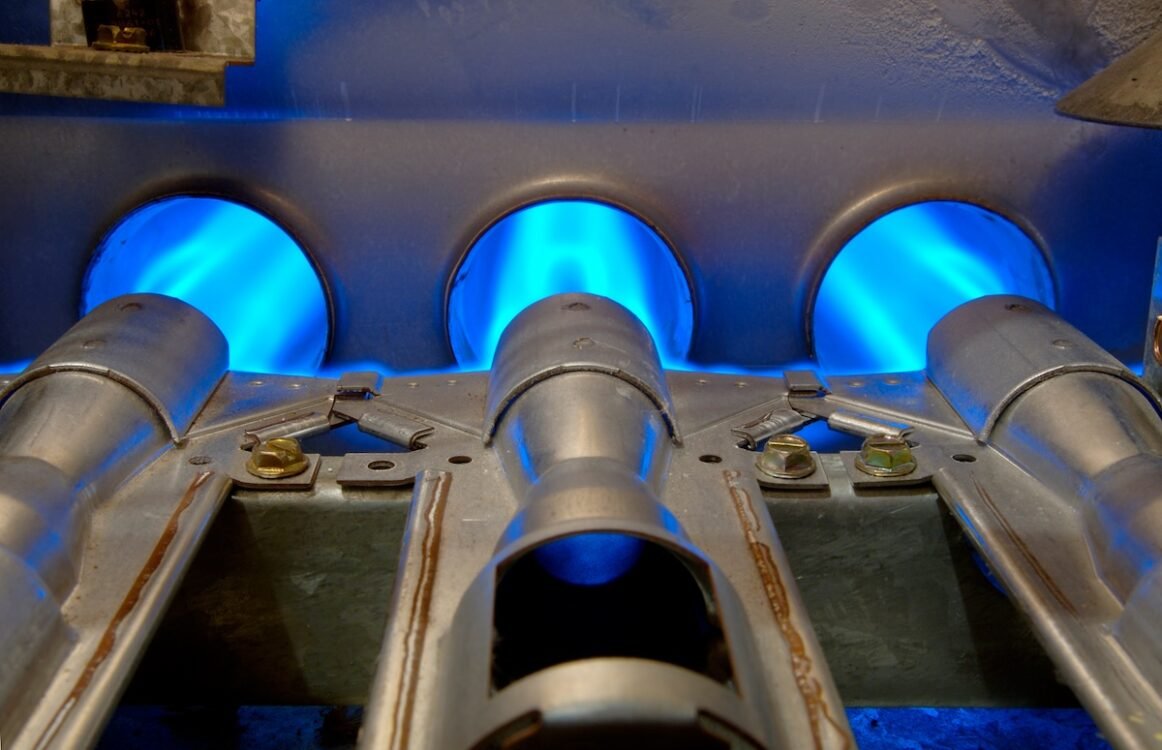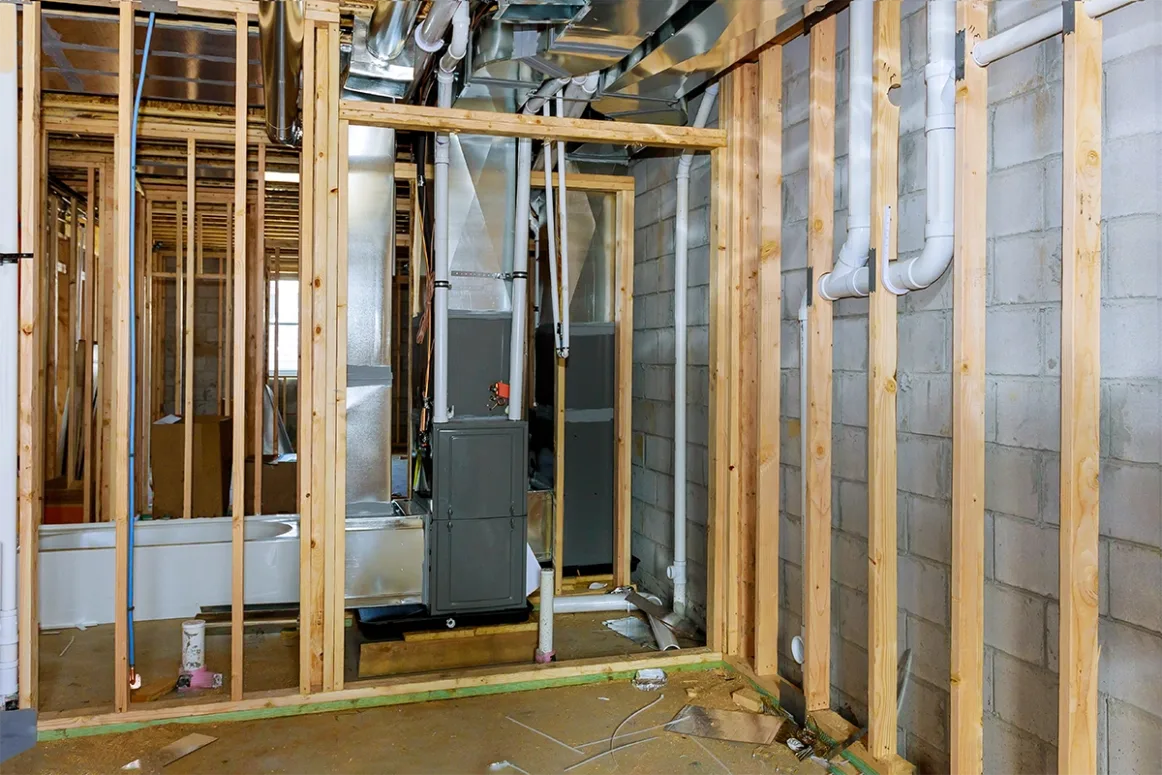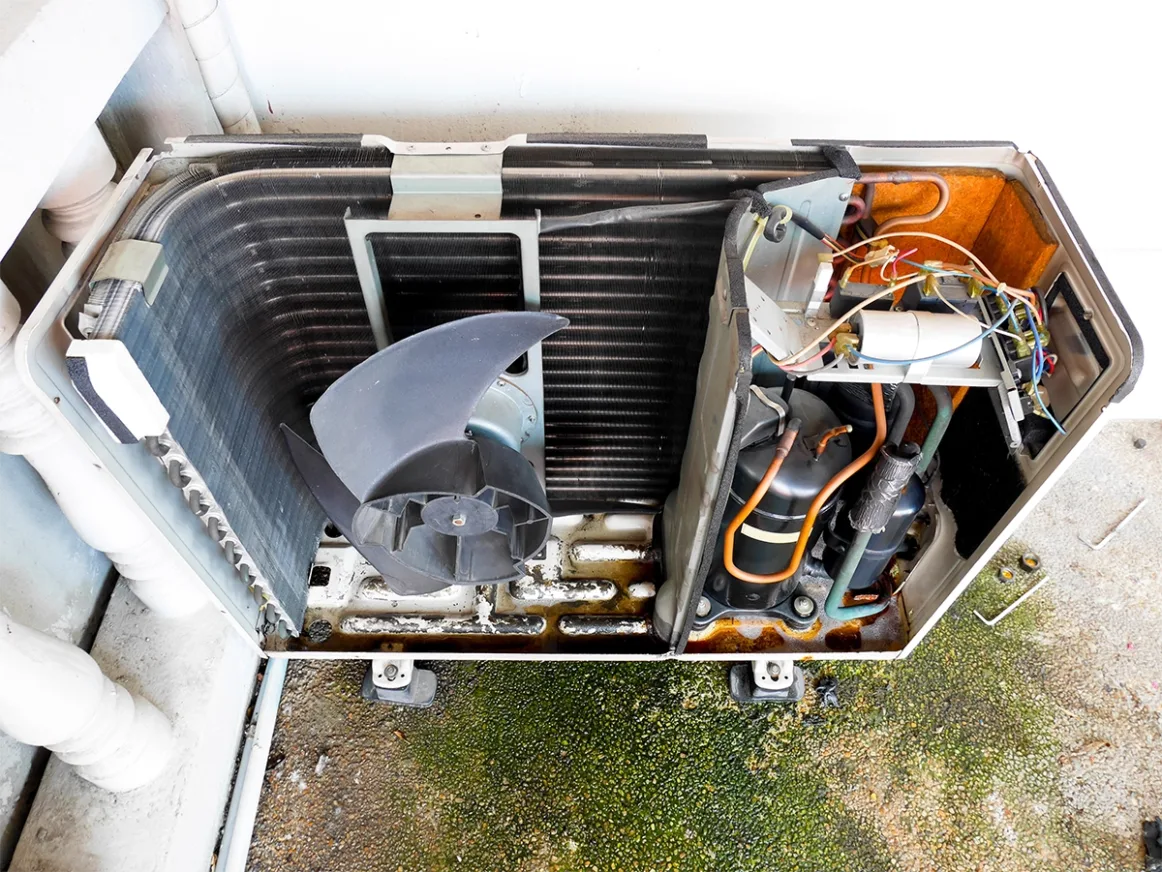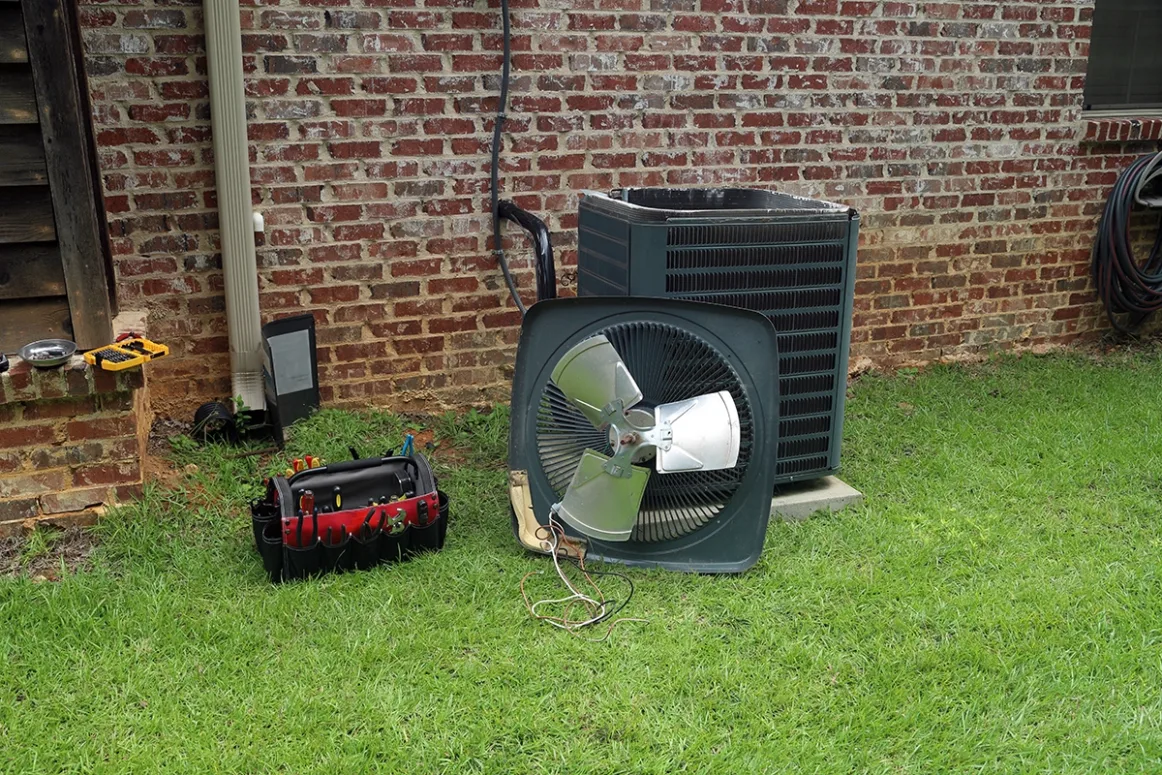
Furnace Heat Exchanger: Signs of Problems & Fixes
Your home’s furnace is the heart of your heating system, working hard each winter to keep your family comfortable. But within that system lies one of its most crucial—and often overlooked—components: the furnace heat exchanger. This part plays a vital role in safely transferring heat from the combustion process to the air circulating through your home. When it begins to fail, it can lead to efficiency problems, comfort issues, and even serious safety concerns.
Understanding how your heat exchanger works—and how to recognize signs of trouble—can help you take quick action before a small issue becomes a costly or hazardous one. If you suspect a problem, it’s best to schedule professional service from a licensed HVAC technician. You can learn more about trusted heating services available in your area to ensure your system runs efficiently and safely.
In this guide, you’ll learn:
- What a furnace heat exchanger does and why it’s important
- Common warning signs of damage or failure
- What causes heat exchanger problems
- Safe repair and replacement options
- How to prevent future issues and extend your furnace’s life
Why Your Furnace Heat Exchanger Matters

The heat exchanger is the backbone of your furnace’s heating process. It safely transfers heat from burning fuel to the air that circulates through your home—without letting dangerous combustion gases like carbon monoxide leak into your living space.
When it’s working properly, it keeps your furnace efficient and your home safe. When it’s not, it can quickly turn into one of the most serious HVAC issues a homeowner can face.
Here’s why it’s so important:
- Safety: A cracked or corroded heat exchanger can allow harmful gases like carbon monoxide to enter your home, putting your family’s health at risk.
- Efficiency: A healthy heat exchanger ensures maximum heat transfer, meaning your system uses less energy to maintain comfort.
- System Longevity: Damage to this component often indicates broader mechanical issues—addressing it early can help extend your furnace’s life.
- Comfort: When the heat exchanger functions efficiently, your furnace can deliver consistent warmth throughout your home without fluctuations.
- Cost Savings: Identifying and fixing small issues early prevents expensive replacements and emergency breakdowns.
For homeowners in Canton and surrounding areas, where heating systems see regular winter use, maintaining a properly functioning heat exchanger is essential for both comfort and peace of mind.
7 Warning Signs of a Furnace Heat Exchanger Problem
A failing heat exchanger doesn’t always cause your furnace to stop working entirely—it often starts with subtle symptoms that worsen over time. Recognizing these early warning signs can save you from costly repairs and potential safety hazards.
1. Unusual Smells
A metallic or chemical-like odor when your furnace is running can signal that the heat exchanger is overheating or beginning to crack. This smell may be caused by combustion gases escaping into the airflow, which should never happen in a properly sealed system.
If you notice: Turn off your furnace immediately and call an HVAC technician. Continuing to run the system could spread dangerous fumes throughout your home.
2. Soot or Burn Marks Near the Furnace
Visible soot, scorch marks, or dark streaks near the burner compartment indicate incomplete combustion—a common sign of a compromised heat exchanger. When the metal begins to crack or warp, fuel may not burn efficiently, producing excess soot or carbon buildup.
Regular maintenance helps prevent this by keeping burners clean and airflow consistent, but once damage occurs, professional inspection is required.
3. Strange Sounds from the Furnace
Popping, rattling, or banging noises coming from your furnace can mean the metal inside the heat exchanger is expanding unevenly due to cracks or corrosion. Over time, these sounds may become more frequent or louder as the damage spreads.
Other possible causes include:
- Loose furnace panels or screws
- Delayed ignition causing pressure buildup
- Warped metal from overheating
Even if the noise seems minor, it’s best to schedule an inspection before the issue worsens.
4. Yellow or Flickering Burner Flame
The burner flame on a gas furnace should burn steady and blue. A yellow or flickering flame indicates improper combustion, often caused by a cracked or dirty heat exchanger. This condition may also release carbon monoxide—a dangerous, odorless gas.
If you notice this color change, shut off your furnace and contact a licensed technician right away. Installing a carbon monoxide detector in your home adds an important layer of protection.
5. Rust or Corrosion Inside the Furnace
Over time, condensation and moisture from the combustion process can lead to rust and corrosion inside the furnace. This weakens the metal of the heat exchanger, increasing the risk of cracks or holes forming.
Routine inspections help identify rust before it becomes severe. If corrosion is widespread, replacement may be the safest option.
6. Visible Cracks or Gaps in the Metal
Sometimes cracks in a heat exchanger can be seen with a flashlight and mirror, though they’re often hidden inside the sealed chamber. If a technician identifies cracks during an inspection, replacement is usually necessary—repairs are rarely safe or reliable in this situation.
Tip: Never attempt to inspect or repair your heat exchanger on your own. Accessing this component typically requires dismantling parts of the furnace, which should only be done by a professional.
7. Carbon Monoxide Detector Alarms
This is the most serious warning sign. If your home’s carbon monoxide detector goes off while your furnace is running, it may mean the heat exchanger has cracked and is leaking combustion gases. Leave your home immediately, ventilate the area if possible, and call emergency services before contacting an HVAC professional.
Even if you don’t feel symptoms like headaches or nausea, treat every CO alarm as a real emergency.
Common Causes of Heat Exchanger Problems

Understanding what leads to heat exchanger damage can help you prevent it from happening again.
Poor Maintenance
Skipping annual tune-ups allows dirt, dust, and soot to build up inside your furnace, restricting airflow and causing overheating. Consistent maintenance keeps temperatures balanced and protects the heat exchanger from excess stress.
Restricted Airflow
Dirty air filters or blocked vents reduce airflow through the furnace. When the system struggles to move enough air, it overheats—putting the heat exchanger at risk of warping or cracking.
Prevention tips:
- Replace filters every 1–3 months
- Keep vents unblocked by furniture or curtains
- Schedule regular airflow inspections
Oversized or Undersized Furnace
If your furnace is too large or too small for your home, it may short-cycle—turning on and off frequently. This frequent heating and cooling of metal causes expansion and contraction stress that can shorten the heat exchanger’s lifespan. Proper sizing during installation prevents this problem.
Excess Moisture or Corrosive Air
In humid climates or homes with poor ventilation, excess moisture can cause corrosion. Likewise, chemicals from cleaning products or paint stored near your furnace can release fumes that corrode metal surfaces over time.
Avoid storing:
- Paints or varnishes near the furnace
- Bleach or cleaning products with chlorine
- Moisture-heavy items like wet mops or laundry
Age and Normal Wear
Even the best-maintained furnaces eventually experience metal fatigue. Over years of heating and cooling cycles, expansion and contraction naturally take their toll. Once your furnace reaches 15–20 years old, the heat exchanger should be closely monitored during each service visit.
How Technicians Diagnose and Fix Heat Exchanger Problems
Because the heat exchanger is sealed within the furnace, diagnosing problems requires professional tools and expertise.
Professional Inspection
Technicians use specialized cameras, combustion analyzers, and mirrors to check for cracks, soot buildup, and corrosion. They’ll also test the airflow and burner flame color to detect any inefficiencies that may indicate internal damage.
Repair vs. Replacement
If the heat exchanger has minor surface corrosion or buildup, cleaning and tune-up may restore function. However, once cracks or holes are found, full replacement is usually required. Replacing the heat exchanger is sometimes possible, but if the furnace is older or out of warranty, installing a new furnace may be more cost-effective.
Replacement makes sense when:
- The furnace is more than 12–15 years old
- Repair costs exceed 50% of a new system
- Efficiency ratings are outdated
Post-Repair Safety Testing
After service, professionals perform carbon monoxide and combustion safety tests to confirm your system operates safely. This ensures no harmful gases leak into your home and that your new or repaired system is functioning properly.
Preventing Future Heat Exchanger Issues

Once your furnace is repaired or replaced, proper care helps prevent future heat exchanger problems.
Follow these prevention tips:
- Schedule yearly maintenance: Annual inspections help catch issues early.
- Replace filters regularly: Keeps airflow consistent and reduces overheating.
- Use a smart thermostat: Prevents short-cycling and temperature swings.
- Install a carbon monoxide detector: Provides 24/7 protection against gas leaks.
- Keep the furnace area clean: Avoid storing chemicals or clutter nearby.
For homeowners in Canton and surrounding areas, professional maintenance before winter begins is the best way to keep your furnace safe, efficient, and ready to perform when you need it most.
Keep Your Home Safe with Professional Furnace Care
Your furnace heat exchanger is one of the most critical components of your home’s heating system. A damaged exchanger not only reduces comfort and efficiency but can also pose serious safety risks if left unchecked. Knowing the warning signs and scheduling timely inspections helps protect both your system and your family.
If you’ve noticed strange smells, odd sounds, or increased heating costs, it’s time to have your furnace inspected. For expert service and honest recommendations, contact us today to schedule an appointment. Our team proudly serves Canton and surrounding areas, helping homeowners maintain safe, reliable comfort all season long.





